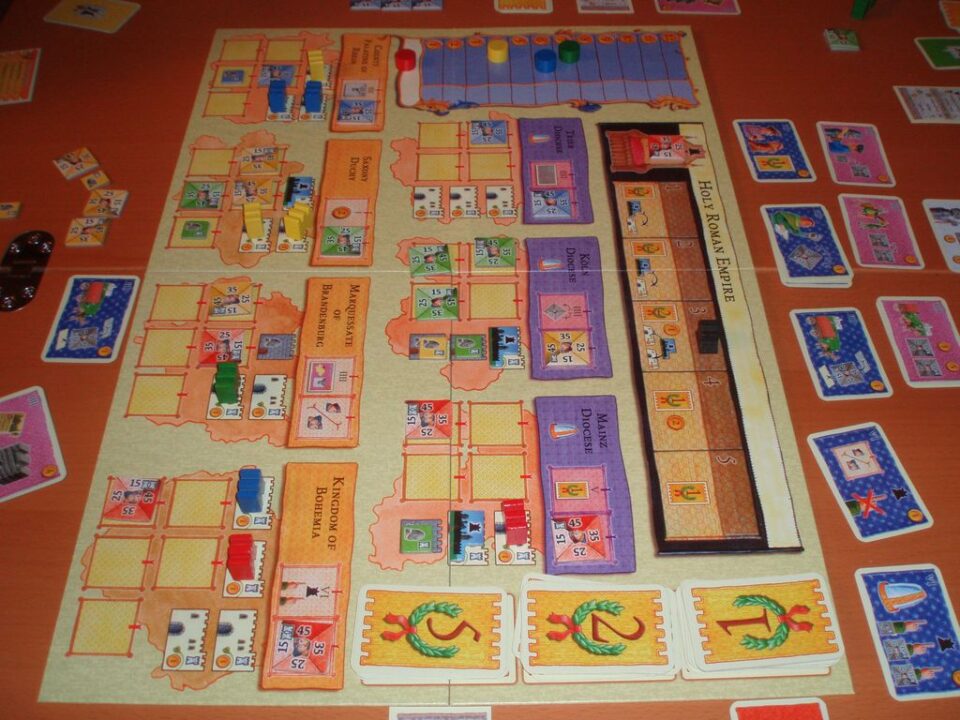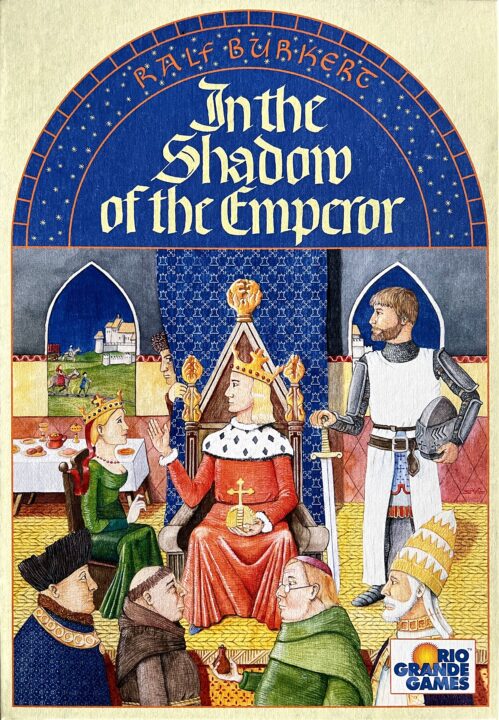Hey there, board game enthusiasts! Today, we’re reviewing Kaiser, a game that’s left me more entertained than I ever imagined. Picture this: you, your best pals, a table, and a game promising hours of fun mixed with strategic plotting. I had a blast, and I’m here to drop the deets on what makes Kaiser a must-try, and where it might fall short. Buckle up, folks—this review’s gonna be one wild ride!
How It Plays
Setting up
First, place the game board on a flat surface. Each player picks a color and takes the corresponding pieces. Shuffle the deck of cards and deal five to each player, placing the remainder as a draw pile. Place the score tracker nearby.
Gameplay
Players take turns in a clockwise order. On your turn, draw a card, play a card, and then move your piece based on the card’s instructions. Some cards allow you to disrupt other players, so be ready for some friendly sabotage! The goal is to complete various missions to accumulate points.
Winning the Game
The game ends when a player completes all their missions or the draw pile is exhausted. Count your points. The player with the highest score wins and gets crowned the Kaiser! If there’s a tie, have an epic tiebreaker round to determine the ultimate winner.
Want to know more? Read our extensive strategy guide for Kaiser.
Gameplay Mechanics and Balance in Kaiser
Ah, Kaiser! It’s like that time I tried baking bread with my friends. It looks simple, but you end up covered in flour and wondering where it all went wrong. Well, Kaiser isn’t that extreme, but it’s got a few quirks. The game revolves around empire-building and resource management, just like any good strategy game should.
One thing I love about Kaiser is the clever use of action points. You get a limited number of these points per turn, and deciding how to spend them adds a delicious layer of tension. Do you expand your territory, fortify defenses, or perhaps invest in technology? The choices feel meaningful and make you think. That’s always a plus in my book.
Now, let’s talk about balance. Oh, balance, the Holy Grail of board game design! Kaiser gets a lot right, but it’s not perfect. Depending on the players’ experience, the game might skew a bit. More seasoned players could dominate faster, leaving newbies in the dust. But hey, isn’t that true in most games? It’s not a deal-breaker, but it’s something to consider if you plan on introducing Kaiser to first-timers.
Luck isn’t a huge factor here, which I appreciate. The game leans more on strategy, so your fate isn’t sealed by a bad roll of the dice. However, the initial setup can sometimes feel a bit unbalanced, depending on the distribution of resources. A little tweaking in the homebrew rules can fix that, though.
So, if you like games where your choices matter and luck doesn’t mess things up, Kaiser is a strong contender. Next up, let’s explore how players interact and strategize to outmaneuver each other in this empire-building adventure!

Player Interaction and Strategy in Kaiser
From the moment you kick off a game of Kaiser, you realize it’s all about mind games and outsmarting your friends. Picture poker night, but with more strategy and fewer chips. You have to keep an eye on what others are doing while pushing your agenda. It’s a delicate balance that makes every game session unique.
The interaction starts right from the get-go. Each player holds their cards close to their chest, trying to figure out the best move while anticipating everyone else’s strategy. The trades, alliances, and even the occasional bluffs make things spicy. Think you can predict Bob’s next move? Well, last time I tried, I ended up losing my best card! Lesson learned: never underestimate your friends.
Strategically, Kaiser shines in pushing you to think ahead. You can’t just rely on luck, and thank goodness for that. It’s all about using your brain juice efficiently. Do you go aggressive early or play it safe and build up your hand? Do you form a temporary alliance or go solo? Every decision can make or break your game. And let’s not forget, adaptability is key. Being able to pivot your strategy when things go sideways is a skill, folks.
Overall, Kaiser delivers a compelling mix of player interaction and strategy that keeps everyone at the edge of their seats. It’s rewarding, frustrating, and thrilling all at the same time. The next time you gather your friends, be ready for some serious mental gymnastics.
Up next, we’ll explore the magic of Kaiser’s components and artwork quality that’ll make your eyes pop!
Components and Artwork Quality in Kaiser
If there’s one thing that Kaiser nails, it’s the components and artwork. When I first unboxed it, I was blown away by the attention to detail. The cards feel sturdy, and the board itself has a rich, high-quality finish. It’s like the game designers knew that every keen gamer appreciates a tactile experience. One of my friends even commented that they felt fancy just holding the pieces!
The artwork deserves a standing ovation. The intricate designs on the cards and the vibrant colors on the board immerse you in the game’s theme. I’m a sucker for good art, and Kaiser didn’t disappoint. Each card features unique illustrations that are both beautiful and functional, making it easy to distinguish different elements during gameplay. You won’t find yourself squinting at the board trying to figure out what’s what.
What truly stands out are the little details. From the embossed lettering to the smooth edges of the game tokens, Kaiser screams quality. You can tell that the creators poured their hearts into making this game not just fun to play, but also a joy to look at and handle. If you’re a fan of games that double as eye candy, Kaiser is a treat.
Next up, we’ll dive deep into the replay value and game length. Spoiler alert: Get ready to hear about some marathon game nights!
Replay Value and Game Length in Kaiser
Alright, let’s talk about two big factors for any board game: replay value and game length. If you’re like me, you don’t want a game that collects dust after just one session. So, how does Kaiser measure up?
First off, replay value is strong with this one. The mix of different strategies you can employ keeps things fresh. Whether you go for a more aggressive approach or play the long game with careful planning, there’s always something new to try. And trust me, trying to outwit your friends never gets old. You can play Kaiser multiple times and still find new layers and nuances.
Now, about the game length. Kaiser isn’t a quick 15-minute blast, but it isn’t a day-long commitment either. It hits that sweet spot where you feel like you’ve had a rich experience without needing a nap afterward. On average, our sessions lasted about 60-90 minutes. That’s long enough to dive deep but short enough to fit into a busy evening.
We found that the game doesn’t drag on because you’re always engaged. The quick turns and constant player interaction keep everyone on their toes. No one’s left checking their phone or wondering when it’s their turn. It’s a good balance between depth and pace.
So, would I recommend Kaiser? Absolutely. It offers great replay value and a reasonable game length that fits into most schedules. If you’re looking for a game you can revisit time and time again, Kaiser is a solid pick.
Conclusion
So there you have it, folks! Kaiser is a gem if you’re into strategic mind games with your pals. With its well-balanced mechanics, you’ll need to outwit rather than out-luck your friends. The components and artwork are top-notch, adding a pleasant visual treat to your gaming night.
I won’t sugarcoat it; the game can be a bit lengthy, but the replay value is fantastic. You’ll keep coming back for more, trying new strategies each time. It’s a win for those who savor a good challenge.
That wraps up my review of Kaiser. Now, grab your friends, set up the board, and let the strategizing begin!


